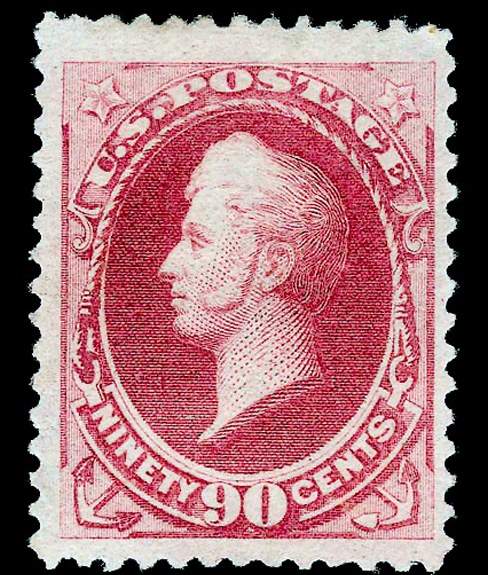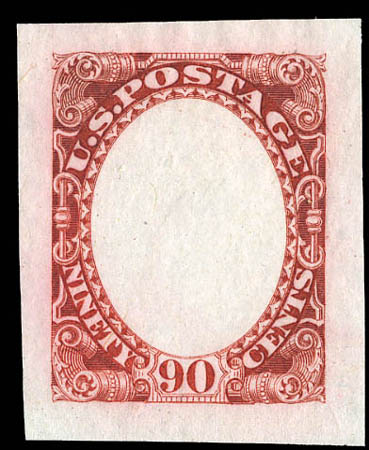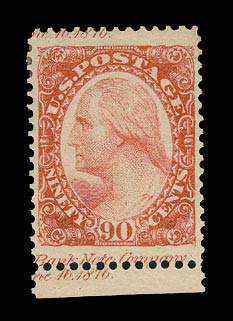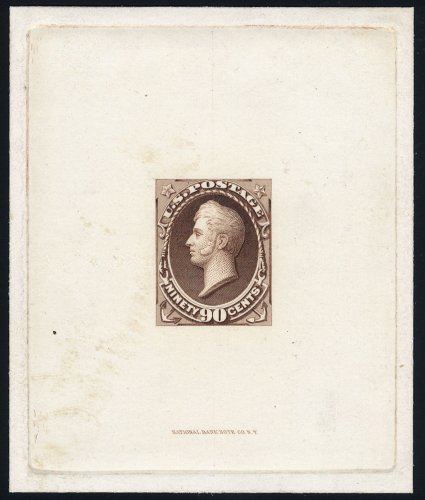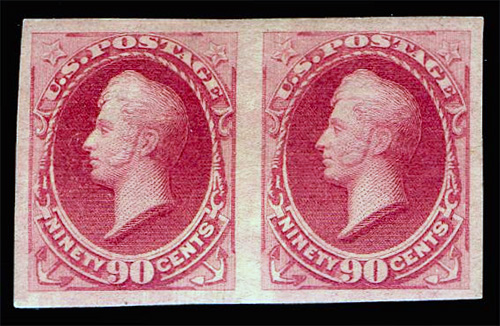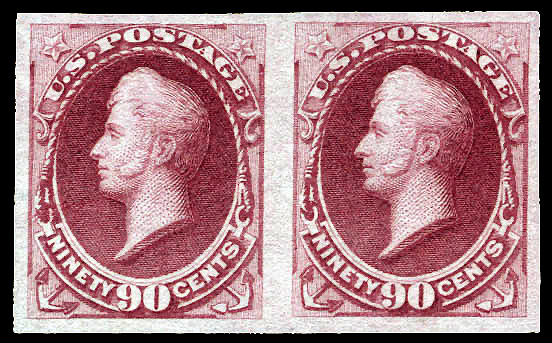Basic Info
90¢
Dark carmine
Type of Paper: Soft porous paper
Subject: Commodore Perry
Number issued: 185,000
Perforations: 12
Scott #: 191
Printer: American Bank Note Company
Earliest Documented Use: May 27, 1882
Value
Used
$40 - $90
No postmark with gum (MH)
$500 - $800
Full perfect gum, no postmark
no trace of stamp hinge mark (MNH)
$11,000 - $13,000
Multiples
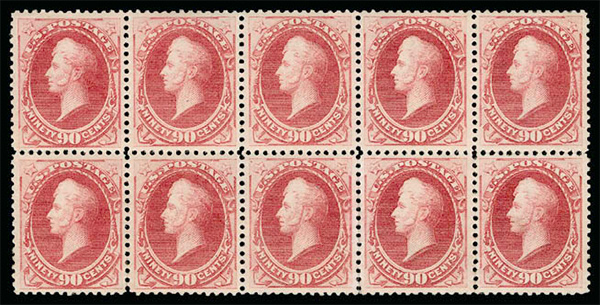
Multiples of the 90¢ stamp are rare. Back in 2007 the multiple above was probably the largest mint multiple known. It has probably been broken into singles by now.
Plate #'s
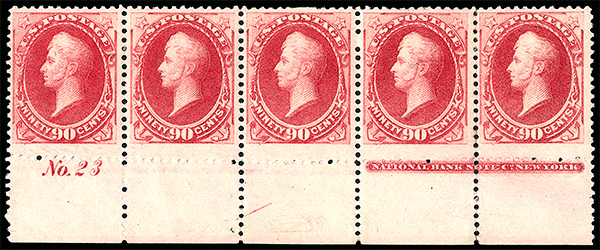
#191 was issued with the following plate #
Imprint and plate number
23
This is the same plate as used by the National Banknote Company
Earliest documented use
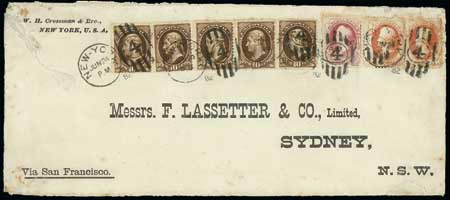
The earliest known documented use of #191, June 24th, 1882
#191 Characteristics
The paper
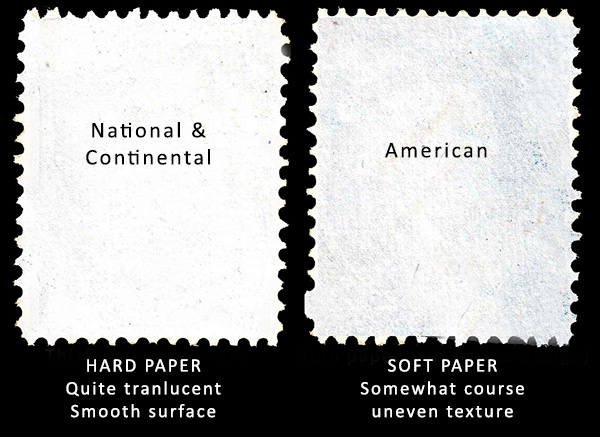
#191 is printed on soft porous paper.
Hard paper was used by the National Bank Note Company and the Continental Bank Note Company. Soft paper was used by the American Bank Note Company.
The hard paper of the Bank Note issues is fairly white, perhaps it might better be called grayish white or sometimes a somewhat bluish white, while the soft paper seems slightly yellowish when compared with the hard paper.
Soft paper has a looser weave and more porous paper than hard paper, so it feels softer, displays a mesh or weave when viewed by holding the stamp between your eyes and light so that you are looking “through” the stamp.
Some people can also ID hard paper be “flicking” the edges and thereby “feeling” the stiffness of the paper versus the feel of soft paper if flicked in the same way. There's more of a snap to the hard paper.
On high magnification the perforation tips on soft paper will have more strands of paper sticking out than hard paper.
Soft paper is fairly dead looking under a long wave UV light ( (briefly and from a reasonable distance in a darkened room) while hard paper reflects more light. If reference copies of stamp designs known only on hard paper or soft paper are viewed under UV light, the difference in paper brightness should be apparent.
For a reference stamp obtain the inexpensive 1861 3¢ (#65), it is only available in hard paper.

A simple test is to hold a stamp to a lamp, you will see the hard paper is more translucent.
The design inspiration
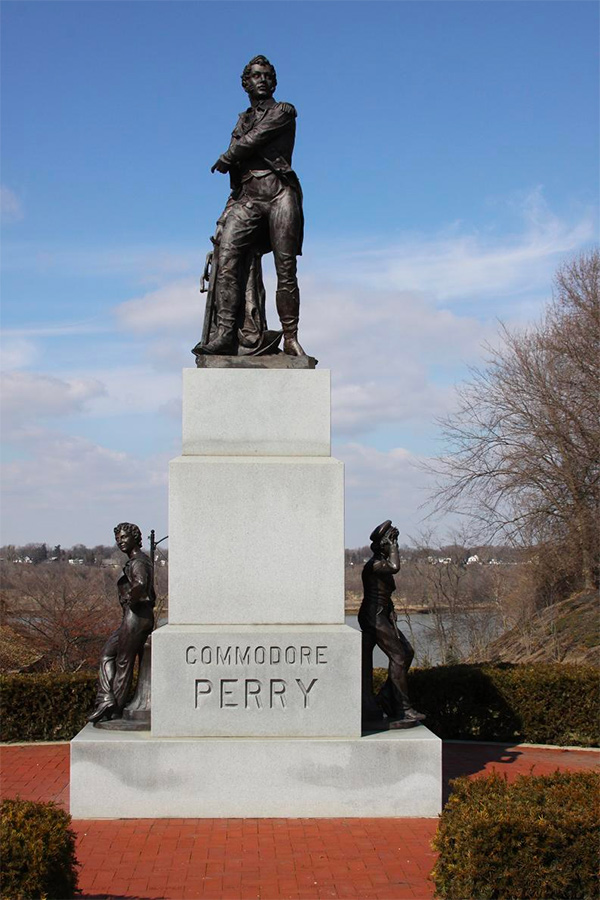
The vignette design was derived by the 1860 William Walcutt statue of Commodore Perry
